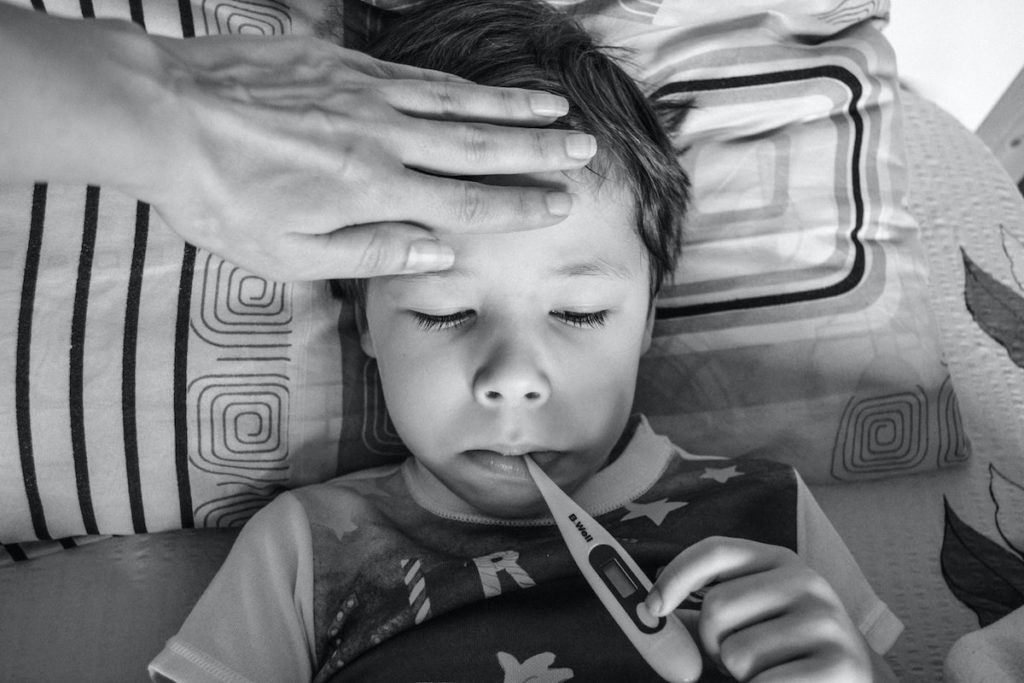It’s usually benign, even though it may not think that way. Various kinds of viruses can cause a common cold.
Children younger than six are at the highest risk of colds, but healthy adults may also expect to have a couple of colds annually.
Symptoms may last longer in people who smoke. If symptoms do not improve, see your physician.
Symptoms
Indicators of a common cold generally appear one to three days following exposure to a cold-causing virus. Signs and symptoms, which may vary from person to person, might include:
The discharge from the nose may become thicker and yellow or green in colour as a common cold runs its program. This is not a sign of a bacterial disease.
For adults — seek medical care if you have:
Fever higher than 101.3 F (38.5 C)
Fever lasting five days or longer or returning after a fever-free interval
Shortness of breath
Wheezing
Severe sore throat, headache or sinus pain
For kids — in general, your child does not have to visit the doctor for a common cold.
Fever of 100.4 F (38 C) in newborns up to 12 months
Rising fever or fever lasting more than two times in a child of any age
Symptoms which worsen or fail to enhance
Severe symptoms, such as cough or headache
Wheezing
Ear pain
Intense fussiness
Unusual nausea
Lack of appetite
Causes
Although a lot of kinds of viruses can cause a common cold, rhinoviruses are the most frequent culprit.
A cold virus enters your body through your mouth, nose or eyes. The infection may spread through droplets from the air when someone who’s ill coughs, sneezes or talks.
Additionally, it spreads by hand-to-hand contact with a person that has a cold or by sharing contaminated items, like towels, utensils, toys or phones. If you touch your eyes, mouth or nose after such exposure or contact, you are most likely to catch a cold.
Risk factors
Children younger than six are at the highest risk of colds, especially if they spend some time in child-care settings. Both kids and adults are more vulnerable to viruses in autumn and winter, but you can find a cold anytime. You are more likely to grab a cold and to possess more-severe colds if you are exposed to cigarette smoke. If you are around lots of people, like at school or on a plane, you are most likely to be vulnerable to viruses that cause colds. This happens when bacteria or viruses enter the space behind the eardrum. Typical signs and symptoms include earaches and, sometimes, yellow or green discharge from the nose or the return of a fever after a common cold. A cold can cause an asthma attack.
Acute sinusitis
In adults or children, a frequent cold that does not resolve can cause inflammation and infection of the sinuses (sinusitis).
Other secondary infections. These include strep throat (streptococcal pharyngitis), pneumonia, and croup or bronchiolitis in children. A physician should treat these infections.
Prevention
There is no vaccine for the common cold, but you can take commonsense precautions to impede the spread of cold viruses:
Wash your hands. Clean your hands thoroughly and frequently with soap and water, and teach your kids the value of hand-washing. If soap and water are not available, use an alcohol-based hand sanitizer.
Disinfect your stuff. Clean kitchen and bath countertops with disinfectant, especially when someone in your household has a cold wash children’s toys occasionally.
Use tissues. Sneeze and cough into tissues. Discard used tissues immediately, then wash your hands carefully.
Teach kids to sneeze or cough in the bend of the elbow when they do not have a tissue this way; they cover their mouths without using their hands.
Do not share. Do not share drinking glasses or utensils with other household members. Use your glass or disposable cups when you or somebody else is sick. Label the cup or glass with the name of the individual with the cold.
Steer clear of colds.
Avoid close contact with anyone that has a cold. Pick your child care centre sensibly. Try to find a child care setting with good hygiene practices and clear policies about keeping sick children at home.
Take care of yourself. Eating well, getting exercise and enough sleep, and handling stress may help you keep colds at bay.




